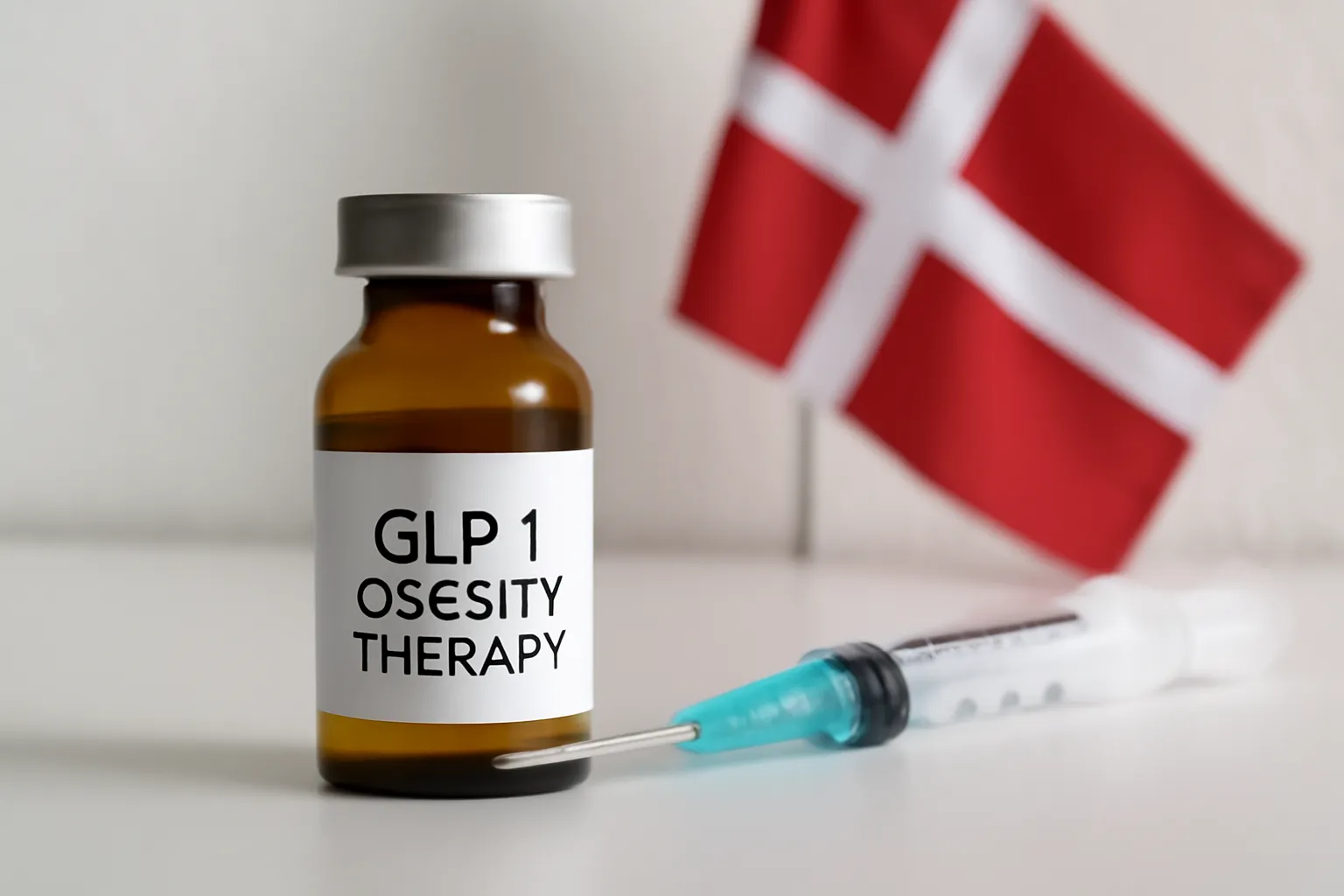Are you looking for a breakthrough in obesity treatment? Discover how GLP-1 therapy, especially in Denmark, is changing the game for weight loss. Learn about GLP-1 analogs, their effectiveness, and how they fit into obesity treatment guidelines.
GLP-1 Obesity Therapy: A Groundbreaking Approach
Obesity, a global health crisis, has long required innovative treatments to address the rising rates of the condition. One such innovation gaining significant attention is GLP-1 (glucagon-like peptide-1) therapy, especially in Denmark, where healthcare systems have embraced it as a leading solution for treating obesity. GLP-1 therapy has revolutionized the way we approach weight management by targeting multiple mechanisms in the body to support significant, sustainable weight loss.
GLP-1 is a hormone naturally produced in the intestines that plays a key role in regulating blood sugar and appetite. In the context of obesity, GLP-1 therapy, particularly with the use of GLP-1 analogs, helps control hunger and improve satiety, making it easier for patients to reduce their caloric intake and achieve long-term weight loss.
GLP-1 and the Obesity Treatment Guideline
In Denmark, healthcare providers have incorporated GLP-1 as a cornerstone of obesity treatment guidelines. The approach to weight management now involves not just lifestyle changes but the strategic use of medications like GLP-1 analogs. The Danish guidelines suggest a multifaceted treatment plan, where GLP-1 therapy is prescribed to individuals who have not achieved sufficient weight loss through diet and exercise alone.
By mimicking the action of natural GLP-1, these medications help patients control their food intake by promoting feelings of fullness and reducing hunger. The treatment protocol often combines GLP-1 injections with behavioral changes, such as healthier eating and increased physical activity.
How GLP-1 Analogues Work in Obesity
GLP-1 analogues, such as semaglutide and liraglutide, are synthetic versions of the natural GLP-1 hormone. These medications have shown to be highly effective in treating obesity, especially in clinical trials conducted in Denmark and other countries. By targeting the GLP-1 receptors in the brain, the analogs help control appetite and food intake. Additionally, they delay gastric emptying, giving patients a sense of fullness after consuming fewer calories.
In Denmark, where healthcare infrastructure supports comprehensive obesity treatments, these medications have become an integral part of the national approach to managing obesity. By offering a potent therapeutic option, GLP-1 analogues have enabled patients to achieve weight loss that was once thought difficult or even impossible with conventional methods.
👉 Discover more about GLP-1 therapy in Denmark 👈
GLP-1 Obesity Treatment: The Benefits and Challenges
While GLP-1 therapy offers promising results, it’s essential to consider both the benefits and challenges associated with this obesity treatment. The key benefits of GLP-1 therapy include significant weight loss, improved metabolic health, and better control over blood sugar levels, making it especially beneficial for individuals with type 2 diabetes and obesity.
Patients who undergo GLP-1 treatment often report a reduction in food cravings and a marked decrease in portion sizes. This leads to improved overall caloric intake control, which is a crucial factor in weight loss. Furthermore, clinical data have shown that individuals on GLP-1 therapy often experience lasting weight loss, with many maintaining significant weight reductions even after discontinuing the drug.
However, like any medical treatment, GLP-1 therapy comes with potential side effects, such as nausea, diarrhea, and, in rare cases, pancreatitis. It is essential for patients to consult with their healthcare provider to ensure that they are suitable candidates for this therapy and to monitor any side effects that may arise.
Key Benefits of GLP-1 Obesity Treatment
-
Sustained Weight Loss Studies show that GLP-1 therapy leads to a reduction in body weight by up to 15% in some patients.
-
Improved Metabolic Health Besides weight loss, GLP-1 analogs improve insulin sensitivity and help regulate blood sugar.
-
Appetite Regulation GLP-1 helps control hunger by acting on appetite centers in the brain.
-
Convenient Administration GLP-1 injections are generally administered once a week or daily, depending on the formulation.
However, it’s important to remember that GLP-1 therapy isn’t a quick fix. Success depends on a combination of medication, lifestyle adjustments, and long-term commitment to healthy habits.
👉 Learn more about the benefits of GLP-1 treatment for obesity 👈
Future of GLP-1 in Obesity Treatment
As research on GLP-1 continues to evolve, the future of this therapy looks bright. In Denmark, advancements in personalized medicine are expected to refine the use of GLP-1 agents for obesity treatment. Healthcare professionals are exploring how the therapy can be tailored to individual patient needs based on factors like genetics, lifestyle, and co-existing health conditions.
The growing acceptance of GLP-1 obesity treatments may also lead to expanded availability and improved access to these medications globally. In Denmark, where healthcare systems are known for their efficiency, efforts are underway to make GLP-1 therapies more widely accessible to a broader range of patients who struggle with obesity.
With the increased use of GLP-1 therapy, there may also be new treatments emerging on the horizon, such as combination therapies or new formulations that enhance the effects of GLP-1 for even more substantial weight loss results. Researchers are keen to explore how GLP-1 can be used in conjunction with other obesity medications to improve patient outcomes further.
What to Expect in the Future
-
More Personalized Treatment Plans Genetic testing and personalized approaches to obesity therapy may help optimize the use of GLP-1 for individual patients.
-
Greater Accessibility As more people become aware of GLP-1’s effectiveness, it’s likely that global access to these treatments will increase, with Denmark leading the way in expanding availability.
-
Combination Therapies Future therapies may combine GLP-1 with other treatments, enhancing the effectiveness of obesity management.
👉 Explore the future of GLP-1 treatments 👈
Conclusion
GLP-1 obesity therapy, especially as it is applied in Denmark, represents a significant step forward in the treatment of obesity. With its proven effectiveness in regulating appetite and supporting long-term weight loss, it has become a crucial tool in the fight against this growing global health issue. While challenges such as side effects remain, the benefits of GLP-1 treatment—especially when integrated with a healthy lifestyle—are undeniable.
As research into GLP-1 continues, the future of obesity treatment looks increasingly promising, with better accessibility and personalized treatment plans on the horizon. GLP-1 therapy is not just a treatment; it’s a game-changer for those struggling with obesity.
“Great things are not done by impulse, but by a series of small things brought together.” – Vincent van Gogh. Let GLP-1 therapy be one of those small things that make a big difference in the battle against obesity.






